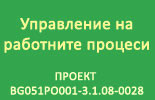CATIA V5 BASIC – Assembly design
|
Course title: |
CATIA V5 BASIC – Assembly design |
|
|
Course code: |
LGCAT |
|
|
ECTS: |
5 |
|
|
In-class hours |
Lectures: |
30 |
|
Laboratory work/Tutorials: |
30 |
|
|
Self-preparation hours |
Practical training: |
20 |
|
Other: |
45 |
|
|
Total hours: |
125 |
|
|
Language: |
English |
|
|
Study cycle: |
Bachelor, Master, PhD |
|
|
Semester: |
Winter & Summer |
|
|
Faculty: |
Faculty of Horticulture and Viticulture |
|
|
Name of the lecturer(s): |
Assoc. Prof. Eng. Georgi Komitov, PhD |
|
|
Mode of delivery: |
Face-to-face, distance learning or a combination of both |
|
|
Prerequisites: |
No |
|
|
Learning outcomes of the course unit: |
The use of computer equipment in the design of products and the accompanying technological processes led to improving the quality of production, shortening the terms from idea to product realization, flexibility in market changes and consumer requirements. The idea of supporting the automation of design in mechanical engineering with the help of a computer was born immediately after its invention. By the mid-1970s, many theories of computer-aided design had been developed. Partial successes have been achieved in a number of countries, CAD design programmes have been established. The roots of CAD are intertwined with the advent and development of computer graphics and computer aiding for sketching and drawing - CAD. When studying the discipline, students gain knowledge about the development design environment CAD, with the development of two-dimensional and three-dimensional models of details and the realization of the drawings of the constructed details of agricultural machinery. The study of the discipline is based on certain modules of the product CATIA V5 and "3D EXPERIENCE". |
|
|
Course contents: |
LECTURES Work in module "Assembly design". Basic commands. 2 hours Creating a model of a assembled node from ready-made models of details. Properties of the tree structure in assembled assemblies. 4 hours Properties of three-dimensional models of the assembled assemblies. Creating constraints and connections of details in the assembled node.4 hours Modification and visualization of the already assembled models of details. 2 hours Work with standardized details in the assembled assemblies. Techniques for creating bolts, nuts, washers, splines, splines. Connect to the assembled node and modify their properties. 2 hours Analysing the model of the assembled node. Using the commands to check object crossings, section cuts of the model, set certain clearances. Ability to visualize and reformat model data. 2 hours Elaboration of a "Stress" model for analysis. Ways of marking the network. Basic errors 2 hours Noting the loads on the assembled unit. Additional environment conditions. Basic errors 4 hours Analysis of the obtained results of the strength sizing of the assembled unit. 2 hours Approaches to Automated Design. Repetitive objects. 2 hours Getting Detail Models from a Conceptual Idea. 2 hours Solving a design task through the analysis of market research. 2 hours
TUTORIALS Elaboration of a three-dimensional model of assembled units. 10 hours Installation of standardized products. 5 hours Assembly of bearing units. 5 hours Checking crossings, incisions, etc. 2 hours Strength sizing of the assembled unit. 4 hours Stress state analysis. 4 hours |
|
|
Recommended or required reading: |
Jaecheol Koh. (2012). CATIA V5 Design Fundamentals: A Step by Step Guide 1st Edition ISBN-10 : 1477689028 Petrova, Tz. (2016). CATIA V5 - Proektirane na mashinostroitelni detaili. Rakovodstvo za ingeneri I student – chast 1.Haycad infotech, Plovdiv. |
|
|
Planned learning activities and teaching methods: |
The lecture material advocates the purpose, approaches and ways of working with the digital design environment, as well as with the basic commands for creating assembled units of mechanisms and machines. The laboratory exercises are conducted in subgroups in a specialized computer laboratory at the Department of Mechanization of Agriculture. Three-dimensional models of the structures are created and simulated At each exercise, students work independently on the tasks set. Students report on the performance of the tasks of the exercise leader, and after his positive evaluation, proceed to the next model. Certification of the semester is given to a student with completed tasks set by the head of the exercises. All lectures are developed on Power Point and allow remote output via the MS Teams platform. The exercises are conducted in person. |
|
|
Assessment methods and criteria: |
The formation of the final assessment is carried out on the basis of the assessments of the conduct of practical knowledge, of the intermediate tests of knowledge and of the conduct of the written examination. Additional questions are asked at the exam to shape the final assessment. The semester score is determined by the formula: SA=0,2.OP +0,2.OM+0,6.OI where SA - semester assessment; OP – assessment from practical knowledge; OM – assessment from intermediate knowledge verification; OI – assessment from the written exam. |
|
 - Events on the occasion of the 80th anniversary of AU
- Events on the occasion of the 80th anniversary of AU











